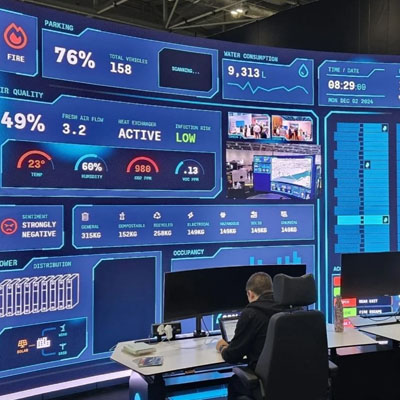4 Key challenges for NOC and SOC in the era of digital transformation
September 10, 2025

In today’s business landscape, digital transformation has become not just a trend but a necessity. With the growth of data, remote work, and cybersecurity threats, the role of Network Operations Centers (NOC) and Security Operations Centers (SOC) has become critical. However, operators and managers of these centers face increasing challenges. Let’s explore the 4 key challenges shaping the future of the industry.
The Growing Importance of NOC and SOC
Across the globe, companies are shifting to digital business models. Cloud solutions, digitized workflows, and interactive services have become the norm. The COVID-19 pandemic accelerated this trend: many organizations adopted cloud-based services and communication platforms within just a few months.The challenge is for NOCs and SOCs to keep pace with this rapid evolution and ensure the continuity of digital processes.
Information Overload
Operators oversee hundreds of monitoring systems and process a constant stream of events and alerts. This leads to alert fatigue — a state of exhaustion from continuous notifications. On top of monitoring, operators must document incidents, resolve issues, escalate complex cases, and manage access control.The solution lies in automation and AI-driven tools that can speed up response times and improve efficiency.
New Work Environment: From UX to Remote Models
Modern NOC and SOC operators are no longer willing to work with outdated and clunky systems. Their expectations are shaped by consumer-grade applications: interfaces must be fast, intuitive, and flexible. Poor UX is not just inconvenient — it leads to mistakes, lower productivity, and slower incident response.This issue has become even more pressing with the rise of remote and distributed work models. The pandemic demonstrated that many tasks can be performed remotely, but this requires robust collaboration tools and clear team coordination. Critical operators, however, must still work onsite, resulting in increased workload.The challenge today is to create work environments that combine convenience, flexibility, and security. These must be equally effective for operators in control rooms and those working remotely. The solution lies in ergonomic, adaptive interfaces and workflow tools that reduce errors, accelerate collaboration, and maintain security.
Cybersecurity Threats
With the rise of IoT, mobile, and cloud technologies, cyberattacks have become a daily threat. Not only Fortune 500 companies but also mid-sized businesses are now targeted. This is further complicated by tool sprawl — the use of too many disconnected security tools, which reduces efficiency and increases risks.The necessity is to move from isolated tools to integrated ecosystems that help NOCs and SOCs quickly detect, manage, and contain incidents.
Looking Ahead
To overcome these challenges, NOCs and SOCs must adopt the concept of a Personal Operational Picture (POP) — a personalized, user-friendly workspace that consolidates all data sources into a clear and intuitive interface. In the future, value will be defined by:
- ergonomics and ease of use,
- flexible and scalable architectures,
- the ability to quickly adapt to new threats.
NOCs and SOCs are evolving from monitoring centers into strategic hubs that ensure the resilience and security of digital business.


